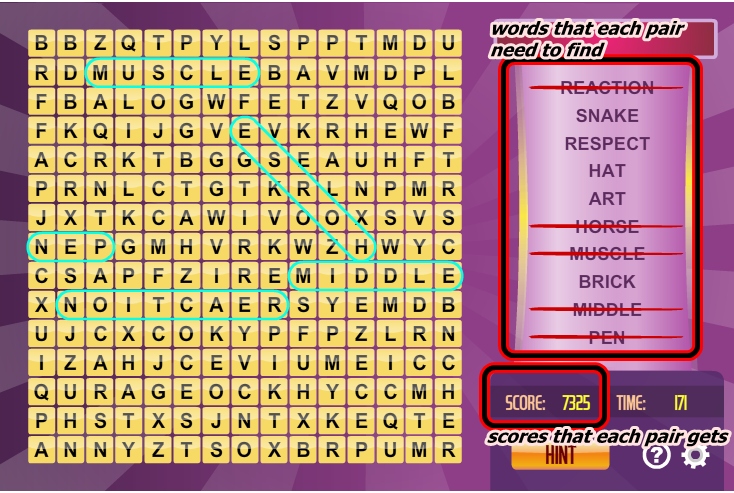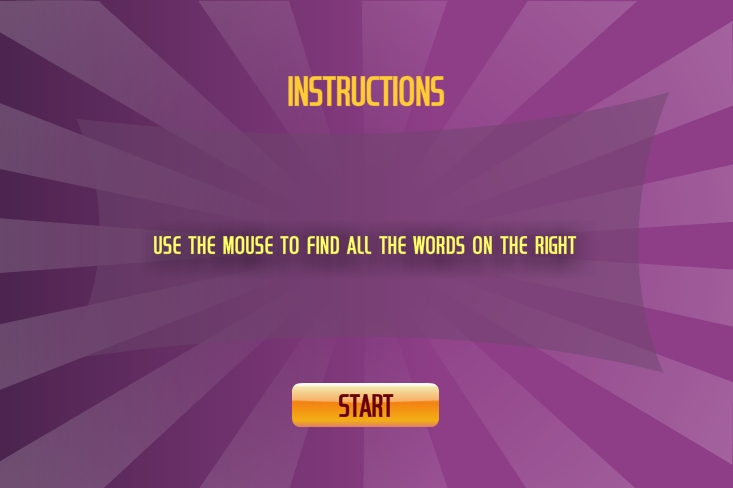Journey to the end of the course…
Looking at the title of this post has saddened me. 
I can’t believe that we’re closed to the end of our long journey (6 long tiring years of study)
It is only 3 more weeks to go and then we are all off to don’t-know-where-yet to be decided..(posting of course!!)
With all the piles of assignments on hold,
I can’t help but to recall every funny moments we had for the past 6 years.
But,
Life must goes on…and
this journey is the end of the new beginning to start..
I will treasure all the GOOD and the BAD memories as apart of my beautiful life 🙂
Come back to the main purpose of this entry,
which is actually about,
the JOURNEY for the group assignment!
In this entry, I will list out 7 possible items which will ensure
an effective student-centered lesson,
an effective personalised lesson,
and
an effective higher-order-thinking lesson.
1. Pupils Produced Materials
What?
o The lesson revolves on the materials produced by the pupils. o All the teaching is taken from the pupils’ ideas. o Teacher discusses the pupils’ findings.
How?
o I ask the pupils to work in groups or pairs and then make a research on certain topic/subject matter. After that, based on their findings, I will ask them to present. Each group will have slightly different ideas on the same topic. Hence this could encourage them to think the similarities and the differences with what they have and what the other groups have.
Why?
o TO be compared with the teacher-produced material. The materials are fixed and pupils just accept the knowledge. They will be too comfortable being spoon fed by the teacher. o By using pupils produced materials, the pupils will feel more appreciated because the teacher values their thinking process. Other than that, this practice also would promote student-centered, personalized and higher-order thinking to the pupils’ learning.
2. Pupils in-charge of their learning
What?
o The pupils will determine on what to study based on their own interest.
o They will reason out why they choose certain topic/issue/area to study.
o The teacher still in control of the class but is opened to the suggestion and ideas made by the pupils.
How?
o I will give a theme for the week or the particular lesson. For example, animals and its babies. Then, I will say to the pupils that we are going to look up the animals and their babies names.
o The pupils will determine what animals they want to know and start find the names on the internet. o Later on they will present to their friends.
o After that, I will go further by asking them to find out interesting facts about the animals and its babies.
Why?
o The pupils are given freedom to choose what they want to study but under the guidelines of the teachers.
o This will encourage them to be an independent learner as well as could support their individual interest.
3. Fun Learning
What?
o Fun learning is about using the suitable materials to support the learning in an effective way.
o ICT tools are one of the comprehensive materials that can capture the pupils’ interest and attention towards the lesson.
o Fun learning is also mostly correlated to student-centered activity.
How?
o I will use various strategies in the lessons for example I will inculcate ICT tools such as games in one lesson, then the physical activity in other lesson like treasure hunt.
o In the assignment 3, I inculcate fun learning through the various activity for example the pupils draw the animals by using Sketchfu then they will click replay and see the animated comical sketch they have done.
Why?
o The pupils are the active participants in the classroom.
o Fun learning could lower down the pupils’ affective filter because the pupils are enjoying themselves in the lesson.
4. Teach Less Learn More
What?
o The learning takes place collaboratively, intuitively, and is carried out according to the pace at which the pupil learns.
How?
o I will give the necessary guidelines for the pupils then the pupils will independently construct their own knowledge by using the resources they have for example the internet.
o The pupils learn at own pace and the end of the lesson all of them will learn something new that differ from one another.
o I on the other hand will make sure that the intended objective of the lesson will be achieved.
Why?
o Teacher would not limit the capacity of the information and knowledge that the pupils can get. This is because each pupil has their own pace of learning.
o In the traditional method of teaching, the teacher will determine what the pupils’ should learn regardless their abilities to cope with the content knowledge. They will always move on and this will result to the weak pupils be left behind. This will decrease the pupils’ motivation to learn.
o Moreover, in student-centered learning, the focused is on the students’ needs, abilities, interest and learning style.
5. Teacher as facilitators
What?
o Teacher facilitates the learning and offers help when needed by the pupils.
o The learning is not centralized on the teacher.
o Teacher stands behind the circles or within the circle and not inside the circle of the learning.
How?
o I give instructions to the pupils only at the beginning of the lesson. Later on, my instruction is embedded in the activity itself.
o I do not spoon feed the information of the interesting facts about the animals but I go around the class to check whether the pupils have achieved what I wanted them to achieve.
o If the pupils are still struggling with the activity, I will help them to push themselves to think and suggest other ways to get the correct information.
Why?
o With all the helps from the outside factors, teachers are no more needed to give the information that the pupils need.
o The role of teachers has changed to facilitate the learning.
o Teacher also carries a role to initiate the learning in the pupils to think critically and reflect on their learning.
6. Using good questioning techniques
What?
o The questions should promote the higher-thinking order in the pupils.
How?
o In my lesson, I use questioning method through the discussion in between the activities.
o The pupils will present their finding, and I will probe them to think of the similarities and differences of the information they have and why.
Why?
o The purpose of schooling and teaching is to shape the pupils and make them to be ready to face the outside world.
o Hence, by asking the right question to enhance their higher-thinking order could help them in their learning.
7. Suitable assessment techniques
What?
o Assessment is vital in teaching and learning process.
o It is to ensure how much the pupils have progressed in learning and also to determine the next planning on the part of the teacher.
o Suitable assessment techniques could enhance the pupils’ motivation to learn as well as personalized learning.
o Portfolio is one the good assessment techniques to be implemented in class.
How?
o In my assignment, I had suggested for the teacher to provide a CD-Rom to the pupils.
o In the CD-Rom, the pupils could save their works that mostly involve ICT tools.
o Teacher could assess the pupils work by referring to the pupils’ collections of works in the CD-Rom.
Why?
o Portfolio could assess the pupils learning holistically.
o Teacher could also see the progress that the pupils made throughout the school term.
o The pupils, parents and teachers could always look back at the pupils’ works in the portfolio.
o This aligns with the method of personalized learning.
E-Book
In this entry,
I will show you the two version of my E-Book. This E-Book was made in 2009.
Below is the first 10 slides of my previous E-Book (before editing)
YOU MAY ALSO WANT TO LOOK AT THE FULL E-BOOK BY CLICKING THE LINK BELOW
(You can see the animations of the clouds, bus and so on)
This E-Book was made for the year 1 pupils
to teach days of a week, colours and shapes.
It is a simple story and the pupils get to sing out the names of the days in a week.
NOW…
look at the edited version of my E-Book
where I have made it to be more interactive and  organized.
organized.
The things that I added and changed:
# I omitted the sentences on the slides with pictures because it is too crowded then I add those sentences in another slides.
#I add few slides with questions to encourage interactions with the pupils. The pupils would not only watch or read this E-Book solely but they will read, understand, recall and answer the questions. In order for this to take place, the teacher first must arrange the pupils into few groups. The teacher provides each group with sketch board or few manila cards with markers. In their group, the pupils must discuss the answers and write the answers on the sketch board or manila card. The groups then hold up their sketch board or manila card. The teachers along with the pupils discuss their answers together. The group members must take turn to write the answers.
YOU MAY ALSO WANT TO LOOK AT THE FULL EDITED E-BOOK BY CLICKING THE LINK BELOW
(I have added few more animation on the slides for examples the flowers, the man with guitar, the question mark)
~THANK YOU FOR READING MY ENTRIES ~
Personalize Learning; A Wild Lesson Plan
Year : 5
Topic: Wild Animal
Time : 1 ½ Hour lesson
Objective: By the end of the lesson,the pupils will be able to:
1.7.4 Listen and watch the movie entitled ‘Where the Wild Things are’ and talk about the people and animals in the story.
1.7.5 Share feelings about the movie.
Set Induction (2 mins)
1. The teacher brings the pupils to the computer room.
2. The teacher asks the names of the wild animals that the pupils know.
3. The pupils put up their hands and tell the names of the wild animal that they know.
Presentation Stage (25min)
1.Teacher teaches about few wild animals that the pupils are not familiar with on the PowerPoint slides. (fennec fox, red ruffed lemur, mongolian wild horse)
2. Teacher asks the pupils to be in the group of 5.
3. Each group must sit together and share a computer.
3. The groups then draw lots to determine which wild animal each group gets.
4. Teacher shows a Microsoft Word template on the diagram/mind map for each group to work on.
5. The pupils search on the internet for details to complete the diagram.
While Stage (30 mins)
1.The teacher asks the pupils to sit on the floor in front of the computer room.
2.The teacher shows the movie ‘Where the Wild Thing Are’ (Part 1- 30 minutes)
3.The pupils watch the movie.
Post Stage (30 mins)
1. Teacher asks the pupils randomly about the first part of the film.
2. The pupils answer to the teacher’s questions.
3. The teacher asks the pupil to sit behind the computer. One computer for one pupil.
4. The teacher gives instruction to the pupils.
5. Each pupil must think of the characters in the story and choose one character that they like.
6. The pupils then must personalize the character by using the application based on their creativity.
(eg: the character of Ira)
7. After they have finish, they must write the character’s name with their name and send their work to 5 of their friends and state what type of animals that they have been choosing to make their personalize character. (eg: ear : fennec fox, arms: red ruffed lemur, tail: Mongolian wild horse)
8. Teacher facilitates and gives help when necessary.
Closure (3 mins)
1. Teacher makes a vote of the showing hands on the character of the film.
2. The pupils raise their hand when the character that they like is being called by the teacher.
3. Teacher summarizes the lesson.
Today I learn, Today I question
I LEARNED
about being creative is not creating something interestingly new,
But,
it is to take something that is already interesting to make it more interesting!
Creative always go together with being innovative.
I like the game Who Wants To Be A Millionaire.
And,
I think it is a brilliant idea to come out with the different format of a quiz.
I QUESTIONED
What else could I change to make the game more applicable and more appealing to the kids?
What type of questions should be given in this game so that it could generate their thinking rather than giving straight forward questions and answers to them?
How could we maximize the participation of all pupils in this game?
What were the appropriate token or gift for the pupils when they answer the questions correctly?
What type of scaffolding should be given to them when answering the questions?
All these questions made me LEARNED THAT,
this game is a good game to enhance the individual capability of the pupil to excel.
This is because, the pupils would work in team but they would also work individually to answer the question.
More or less they need to push themselves to think and get the correct answer for the sake of their group.
In the way,
this game would not give any tension like in the test or the pop quiz to the pupils
Because,
the layouts of the games are colourful and the reward(we are giving sweets) as the extrinsic motivation are promising to the pupils.
Besides,
the lifelines (50-50, hint, ask audience) in the game,
give the pupils the sense of accomplishment.
It is also make them aware that in life there is always a second and more chances to improve ourselves,
and in study,
the mistakes that we made would make us more mature in thinking.
Therefore,
learning from our mistakes is the powerful thing to learn!
As,
I watched all the groups’ presentations that day,
I found out that, everyone had a great unique ideas on their own.
I LEARNED a lot from their creative ideas.
They also had different interpretation of the game.
For example,
the names of the game
the type of rewards to give (money, stars, different names for different stages etc),
the topics or the language focus,
and many more.
Lastly,
I would definitely use and adapt this game in future for the benefits of my pupils.
THANK YOU…
MindJolt Games –> word search
For this week entry, I would like to share with you a game which is common to everyone who has an facebook account.
Honestly, I do not like to playonline games so much because I hate to be in front of the computer screen for too long. Yeah I do play them sometimes, but not to the level of becoming a games-addict. As my nature is to easily become bored of something, thus, there are many games that I’ve tried so far and most of them is the very easy kind of games like in the MindJolt games in the facebook application where you do not need to occasionally play the game and do follow up activity like in the PetSociety game. I have played PetSociety for a couple of weeks and I pity my pet because the last time I openned the application, my pet became so dirty and stinky.
Because, I do not played most of the exciting social games on the net, therefore, for this entry, I would only use the games of word search in my lesson.
The objective is the pupils will be able to find the hidden words.
This activity will be done to the year 5 pupils.
The lesson would be carried out at the computer’s lab.
The enrollment is 22 pupils.
Procedures:
1. Two pupils share one computer and all of the pupils already have the facebook account.
2. Teacher directs the pupils to open the MindJolt application on their computer.
3. The pupils open the application but not playing the game yet. The pupils listen to the teacher’s instruction.
4. Teacher gives the instruction on how to play the game.
“In this game there are a grid of letters on the left and a list of words on the right. Search for the listed words in the grid of letters. The words may run from any direction, left to right, bottom right to top left, etc. Use the mouse to drag in the grid to mark the words. The faster you find all of the words, the higher your score.”
5. When everyone is ready, teacher tells the pupils to start playing the game simultaneously.
6. The pupils play the game.
7. Teacher records the pupils’ score.
8. The teacher then asks the pupils to search for the meaning of the words online to get extra 10 marks so that they can add up their previous marks.
9. The pupils use any dictionary application online and start searching for the meaning of the words.
10. Teacher gives help to the pupils.
11. Teacher round up the score and praise the pupils for the hardwork.
 This game could practice the pupils’ concentration. It would also help the pupils to find the hint or use any possible strategy to get to find the word fast. They would also learn to cooperate with their friend. The pupils could play this game with their friends and family members at home. It is also would help to enrich the pupils vocabulary.
This game could practice the pupils’ concentration. It would also help the pupils to find the hint or use any possible strategy to get to find the word fast. They would also learn to cooperate with their friend. The pupils could play this game with their friends and family members at home. It is also would help to enrich the pupils vocabulary.
Domo Animate
Hello dear reader..i hope it is not too late to wish all my Chinese friends and lecturers, HAPPY CHINESE NEW YEAR!
For this entry, I’ll be writing about this particular ICT tool called ‘DOMO ANIMATE’. This is a fun tool to explore as it’s tag line is “mingle with animators”, hence you can express a lot of creativity in creating animation.
I found that this tool is similar with GO ANIMATE application as both are about creating animation where we can choose the backgrounds, the characters, the actions, the movements and so on to make a complete animation series. Some of the characters in this tool are the same with the characters in Go Animate.
The limitation of this tool is the animation would be hang or stuck if we create too many slides. The complete animation would not play smoothly with some part of the animation created would be missing. I believed that this problem has got to do with the internet connection as well as the capacity of the computer.
I have tested this application by creating my own animation which is suitable for standard one. There are so many things that I can teach the pupils by using this ICT tool. For example, the vocabulary, where the background that I chose was scenery at the hill side. Thus, the pupils could learn how to spell trees, hill, cloud, tree trunk. I also could add extra props that can move. The pupils would love to learn by watching this animation. The lesson would not be dull in the classroom. The colourful animation could attract the pupils’ attention towards the lesson. Hence, this tool could be served as the teaching aid in the lesson.
In my opinion, I found that this tool is a user friendly to the teacher. First of all, it gives the ideas to the teachers and allow the teachers to play with creativity. I was quiet blur at first on the story that I wanted to create as the teaching aid in the classroom, but then, as I looked through the background and all the application that they had, somehow it aroused the idea in me and I just go along with it. Secondly, this application could be saved. I can continue adding on or edit my work at any time that I want. Lastly, I could have a collection of animation on this side because all my animation would be saved there permanently unless if I want to delete it. Therefore, I would not have to redo my teaching aids all over again. I just can re-use what I have in my collection.
The TOP 10 wishLIST
Have you watch this video? This video portrays an ideal class on implementing ICT in the classroom.
TOO GOOD TO BE TRUE???
Amazingly it has been done in other country successfully. In Malaysia, we are going to this direction.
This is our vision. This is what we want to achieve. This is our dream.
but…. ARE WE THERE YET?
With the inspiration of the above video, below are MY 10 WISHES on how would I change the ICT situation in our education system based on my perspective.
10. FREEDOM LEARNERS
Allow the pupils to explore and learn ICT on their own. Give one slot in the week for example an hour for the teacher to bring the pupils to the computer lab. Utilize what we have now in the school (i.e computer lab) to the maximum. Teacher as facilitator is only to guide them through the process of learning. Allow them to be the autonomous learners. Give freedom for them to choose what they want to learn for that day and find materials and information on their own. This could be done as the enrichment activity after the pupils have finished a topic. The pupils will share the information of the subject that they like and also the process on how they get the information.
9. PROVIDE LAPTOPS AND OTHER ICT TOOLS AS THE TEACHING AIDS
As many teaching apparatus for example, weighing scale, tables and cards, laptops could be one of it as laptops are easy to carry and easy to store or keep.
8. DEVELOP ICT ENVIRONMENT IN SCHOOL
Make the pupils be familiar with ICT facilities. For example, set few computers which attach to wi-fi connection at the indoor hall and other strategic places in the school. Besides, place the LCD television at the hall or other corner at the school showing the EduTV, national geographic and so on.
7. VIRTUAL LEARNING
The pupils are too clinging with their own classmates. The first class pupils will always be together and do not mix with the other pupils from the other classes. Besides, the input given by the teacher would be different from one class to another. Hence, to change this culture, the teacher could set up a group discussion through the social networking medium for example facebook and others. This is just to develop their social skill in the correct manner which will be monitored by the teacher from time to time. The pupils in the same standard would be randomly grouped into few small groups. In their own group, they could share anything about their study, play online games together, discussing about homework together and so on. Indirectly, the pupils will learn from each other and also could build up their interpersonal skills.
6. FAMILY INVOLVEMENT
Give the pupils take home tasks which involve their family members. For example, the pupils podcast the interview with their family or the pupils with the parents and the siblings sit together to do picture editing about their family tree.
5. TECHNOLOGY EXPERT IN THE SCHOOL
Instead of asking the teacher to be in charge of the ICT, each school should have one person who is expert in ICT to program and design the ways of enhancing ICT in the teaching and learning process in the classroom. The technology expert of that school will know the pupils’ learning pace and background. He or she could design the specific activities based on the pupils’ competences. This could be effective because he/she is expert in the ICT field and also could lower down the teacher’s burden. Teacher could also refer to this experts to ask anything about the ICT and the new technology in the world.
4. E-JOURNAL
Ask the pupils to record the feelings, reflection, comments everyday. The journal could be on any topic that they feel free to share for example about the school, family or the subjects. They could record their voices or even record the videos to be put up on the E-Journal. Other pupils can comment on their entries and teacher facilitates.
3. FINANCIAL SUPPORT
The government and the school administration should have enough fund to provide and maintain all the ICT facilities in the school. The NGOs are also responsible for this development.
2. FRIENDLY USER SCHOOL’s WEBSITE
The school establishs a friendly user school’s website which could be freely access by the members. The members would be the school teacher, the administration, parents and students. The website must be colourful, attractive and child user friendly. The school could update the parents about the school’s events and problems to the parents through this website. The teacher also could upload the pupils’ works in this website as to give the sense of achievements to the pupils.
1. A TEACHER BE THE CLASS TEACHER FOR THE WHOLE 6 YEARS OF THE PRIMARY SCHOOLING YEARS
The same teacher is assigned to be the class teacher for the particular class starting from Year 1 until Year 6. Hence, she or he will be able to know the pupils’ background and learning progress well (For example, I am going to be the class teacher for 1 Melur, therefore, I will be their class teacher from standard 1 until standard 6) The class teacher will be in charge of giving the ICT exposure to his/her class. The ICT exposure is not directly related to the language content but it is done indirectly (tap on the general knowledge for example online news, youtube videos, etc) Thus, the teacher will be able to teach or implement ICT gradually to the pupils where she/he has 6 years of time to impart the ICT knowledge and skills to the pupils. A lot of activities like keeping e-portfolio could be done with them and they could learn ICT in stages.
~AS PROMISE WILL BE CARRIED OUT BY SITI NURBADARIAH MOHAMMED BAHAR~
week1:Reminisence of the Past Teaching Practice Experience
Nothing I can forget about my teaching practice…
Before, it was a taboo to talk about teaching practice or ‘practicum’ as everyone will get a cold feet hearing or imagining about it. A lot of imagination came alive liked a PowerPoint slides inside my mind.
(ching -the sound of slide transaction effect-) One slide showed a picture of me teaching the class full of pupils ALONE. How would the pupils react to me? Would I be able to teach like the other teachers as I have no experienced at all conducting a real class before?
(boom -the sound of slide transactions effect-) Another slide showed the routine of the life as a teacher. 5 a.m: get ready, 6.30am: go to school, 7am: arrive at school, straight to the office to sign attendance (if you are lucky enough you would not bump into the principal or else she/he will ask you about your teaching and so on) 7.30am: class started, 1.30pm: school ended but not for teachers, 2 pm – 3pm: meetingssss..for certain days the teachers would need to stay back until 6pm for extra curriculum.
(click –the sound of slide transactions effect) On this slide, there were full of pictures of me and the other teachers..how the teacher-teacher relationship would be? Would they be friendly? or the other way around?
All in all, these were my first interpretations or impressions about how my three months of teaching practice would be. However, on the 12th July until 1st October, all these questions had answered. It was proven that it was not scary at all…In fact, it was a new, fun and memorable experienced for me.
My experienced revolved around the school of Sek.Ren.Keb.Bandar Tun Razak (2). The teachers and students were friendly. The environment was calm and at ease maybe because the school capacity was small only with 2 buildings. Each standard would have 3 classes and in each class would have approximately about 25 to 28 pupils. The first class which called ‘pilihan’ was mostly the teachers’ daughters and sons and some of them from above average families. The second class named ‘Jaya’ was from the pupils of average families. The pupils in the last class named ‘Gemilang’ were mostly from the ‘Tengku Budriah’s Shelter Home’ kids. They were not fortunate as any other pupils.
I was given the year 5 class, 5 Pilihan. There were 25 pupils in the class, more girls than boys. At first, I had a hard time to make them be opened and approachable towards me maybe because I was new and not familiar to them. A lot of activities that I carried out in the class was focusing on giving them opportunities to talk, laugh, run and so on which was different from their typical classroom setting they had before that was on paper, pencil and textbooks based.
In order to make the pupils and the classroom environment became lively, I had inculcated ICT in my lesson which was by using PowerPoint presentations, musics, and videos. There was no problem in implementing and using the ICT equipments in these school. This was because the projectors and the media room (which now had been transformed into music class) were always unoccupied. Therefore, it was easier for me to use the equipments and the facilities anytime I liked.To add on, the media room was so spacious and convenience as I can adjust the sitting arrangement in the room.
The lessons with ICT.
LESSON # 1
There was a lesson that I did by using PowerPoint presentation to teach adjectives and poem. The pupils were so excited to see the colourful visuals and words on the PowerPoint slides. The rationales of using PowerPoint for these particular lesson were :
- I could observe my pupil 100% as I would not have to turn my back to the screen and then to the pupils. I only had a quickly peek down at my laptop and then to my pupils. Hence, I could manage my pupils very well. I also could have eye contacts with them.
- I could save time on pasting word cards, manila cards and so forth if I were to use the normal teaching aids but by using PowerPoint, I had managed to control my time management successfully.
- The PowerPoint slides could attract the pupils’ attention to my lesson. The colourful visuals and words had successfully made my pupils interested listening to my lesson.
- The wordings on the PowerPoint made it easier for the pupils to see clearly.
Click On This : ADJECTIVE IS FUN
LESSON #2
This lesson was about adverbs. In this lesson I showed the lyrics of the adverb song on the PowerPoint, then I played the song. I also showed the examples of adverbs in the PowerPoint slides. In the end, the pupils got the chance to play the snake and ladder game which I projected the snake and ladder board on the screen and each group had to answer a question in order for them to move the token. The tokens was made from A4 papers where I pasted on the snake and ladder board on the projector’s screen. There’s also a giant dice where i made it by using a big box. Based on this lesson, I realized that:
- The pupils enjoyed themselves with the video song which was a bit funny for them because the song was too fast with cartoon voices. They were entertained with the cartoon video. Through this, I had instill fun element in the pupils. They were all laughed at each other because they can’t catch up with the lyric.
- I also managed to let the pupils played the giant snake and ladder board game where I projected the board on the screen to make it huge. The pupils were all excited. They even got up from their seat and had full enthusiasm to win the game. The rationale of doing this was I want the whole class to fully participate in this game. Hence, by letting the whole class to see the snake and ladder board instead of in the piece of paper, the pupils were able to cooperate with each other and give more encouragement to each other. The class environment became lively.
Click On This : powerpoint Adverbs
Lesson #3
This lesson was my final observation by the lecturer. I was so satisfied with the outcomes of this lesson regardless the comments that I got (haha!). As this was the final observation and also nearly to the end of my teaching practice, I decided to use PowerPoint slides and a YouTube video. This lesson was on the topic of ‘How to Handle a Pet’ where I would I show this through PowerPoint slides and the Youtube video to show the hamster trick or specialty on storing food in their storage or ‘secret pocket’. I also brought in the real hamster to the classroom. I was very success in this lesson. The reason why I say this is because, I, myself was afraid of the hamster. It was my first time so I dare not to touch, hold or even pat the hamster even it was in its cage. However, I successfully fool the kids, and showed that it was nothing, i was just a pet, a little tiny creature which we need to take care of. I even said to few pupils that you don’t have to be afraid of the hamster. (HAHA! I acted so well that day) This lesson made me realized that:
- It would be impossible for me to train the real hamster to show its trick of storing foods in their so called ‘secret pocket’. Hence, by using YouTube video to show this, I had saved a lot of time on training the hamster (HAHAHA ARE YOU SERIOUS!!) What I mean is, I had saved a lot of time in explaining that hamster has their own ways of storing food and that’s their specialty and bla bla bla. By showing the video, it had explained it all.
- By using the YouTube video, I also had gave the pupils a different experience and knowledge about hamster which they might not know before. As some of the kids in my class had never touch the computer or what more to go online to search on this matter.
Click On This: HOW TO HANDLE HAMSTER hamster storing foods
Besides these three lessons I have mentioned above, I was lucky to have a chance to teach the pupils on the topic of Internet. In this lesson I showed the pupils the pictures of computer components and asked them to rearrange the components to make a complete computer and also labeled them. I also brought in a laptop and showed them the differences between the computer and the laptop. I asked them to come and touch the laptop as I had mentioned before, there were some of the kids that had no computer facilities at home. Then, after the short introduction, I showed a demonstration on how to open and search on the internet. The teacher who had observed me commented that it would be more good if later I could bring the pupils to the computer lab where they would have a computer each and they can explore with the compute themselves.
So, that’s all about my past teaching practice involving ICT. I was glad that I had this school with the wonderful kids. I also would like to thank to my partner, Nursharina Azman for the memories we had together for the past 3 months.
~ADIOS AMIGOS~
Last class…
Hello everyone….
We had arrived at the last week of this semester. Everyone was cheerful and happy maybe because the semester is over or might be because Prof had given us a lot of tips for the exam!! Thank you for that. I really hoping everybody could sail through this course with flying colours.
I really appreciate everything I have learnt in this course for the past 14 weeks. The valuable knowledge & experience I gain in this course really help me a lot. Even though I can’t call myself a techno savvy person but through this course I know what technology could offer especially in the education field.
I’m taking this chance to thank the lecturer, Prof Raja Maznah, and all the tutors for your help and knowledge for the past 14 weeks. THANK YOU SO MUCH..![]()
![]()
![]()

week 11- the extension
The extension for our video kit’s submission…yeay..horray!!! Miss Ng had clarify to us a lot of things and made our live easier….that week itself, Prof asked us to reflect on the ideal classroom….which you could see it in my next entry…i would thank the tutors and the lecturer for given us time and guide us through the things we don’t understand…sincerely it helps us a lot…we love you guys for that…i believe everyone really put their efforts and really serious in doing the assignment..the new submission date is on week 12…
That’s all for now for week 11 ![]()
( please refer to my entries on the trilogy of my group’s video kit to know more about the progression of my group’s video kit)















